Bank Exams Exam > Bank Exams Notes > General Awareness > What Is An Orbit?
What Is An Orbit? | General Awareness - Bank Exams PDF Download
| Table of contents |

|
| Introduction |

|
| What Shape Is an Orbit? |

|
| How Do Objects Stay in Orbit? |

|
| Types of Orbit |

|
Introduction
- An orbit represents a predictable and repetitive trajectory that one celestial object follows as it revolves around another. Objects within an orbit are commonly referred to as satellites, which can either be natural, such as Earth or the moon, or artificially created, like the International Space Station. It is worth noting that several planets possess natural moons that orbit them.
- Within our solar system, various celestial entities, including planets, comets, asteroids, and more, revolve around the central sun. The majority of these objects follow paths situated within or in proximity to a conceptual flat plane known as the ecliptic plane.
What Shape Is an Orbit?
- Orbits exhibit diverse shapes, but all conform to an elliptical form, resembling ovals. Planetary orbits, in particular, tend to be nearly circular in nature. In contrast, the orbits of comets exhibit distinct shapes, characterized by high eccentricity and a "squashed" appearance, resembling thin ellipses rather than perfect circles.
- Satellites in Earth's orbit, including the moon, exhibit variability in their distance from our planet. They periodically approach and move away from Earth. The nearest point in a satellite's orbit to Earth is termed its perigee, while the farthest point is referred to as the apogee.
- In planetary orbits, the point closest to the sun is known as perihelion, and the farthest point is aphelion. Interestingly, Earth attains its aphelion during the summer in the Northern Hemisphere. The time required for a satellite to complete a full orbit is termed its orbital period, with Earth, for example, having an orbital period of one year. Furthermore, inclination denotes the angle formed by the orbital plane in relation to Earth's equatorial plane.
How Do Objects Stay in Orbit?
- The phenomenon of objects maintaining their motion is governed by Newton's first law of motion, which asserts that an object in motion will continue moving unless influenced by an external force. In the absence of gravitational forces, a satellite orbiting Earth would follow a straight path into space. However, the presence of gravity exerts a force that draws the satellite back toward Earth. This results in a continuous struggle between the satellite's inclination to move in a straight line, known as momentum, and the gravitational force attempting to retain the satellite within its orbit.
- The key to achieving and maintaining an orbit lies in the delicate balance between an object's momentum and the force of gravity. If an object's forward momentum is excessive, it will bypass the orbit and continue into space. Conversely, if momentum is too weak, the object will descend and eventually collide with Earth.
- When these forces reach equilibrium, the object consistently experiences gravitational attraction toward the planet but avoids collision due to its significant lateral velocity. The speed required to sustain an orbit is termed orbital velocity, with its magnitude varying with altitude. For instance, at an altitude of 150 miles (242 kilometers) above Earth, the orbital velocity is approximately 17,000 miles per hour. Notably, satellites in higher orbits exhibit slower orbital velocities.
Types of Orbit
When a satellite or spacecraft embarks on its journey, it typically enters one of several specific orbits around Earth. Alternatively, it may initiate an interplanetary voyage, breaking free from Earth's orbit to navigate around the Sun, ultimately reaching distant destinations like Mars or Jupiter. The choice of orbit depends on various factors aligned with the satellite's intended purpose and mission objectives.
Here are some key satellite orbits:
1. Geostationary Orbit (GEO)
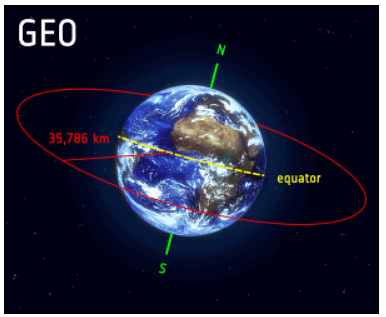
- Satellites in geostationary orbit (GEO) are positioned above the equator, approximately 35,786 kilometers (about 22,236 miles) above the Earth's surface.
- They move in sync with the Earth's rotation, taking approximately 23 hours, 56 minutes, and 4 seconds to complete one orbit.
- This synchronization means that GEO satellites appear stationary relative to a fixed point on Earth, making them ideal for applications that require constant coverage of a specific region.
- GEO is commonly used for telecommunications satellites because it allows ground-based antennas to remain fixed on the satellite's location without needing to track its movement.
- Weather monitoring satellites also benefit from GEO orbits as they can continuously observe specific areas, helping meteorologists monitor weather trends.
2. Low Earth Orbit (LEO)
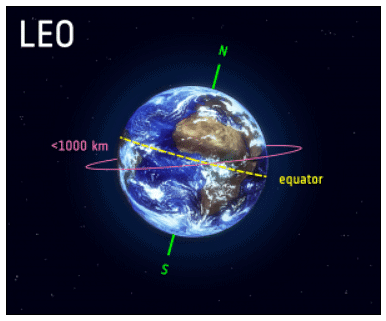
- LEO is an orbit relatively close to Earth's surface, typically ranging from a few hundred kilometers to about 2,000 kilometers (about 125 to 1,240 miles) in altitude.
- Unlike GEO, LEO satellites do not need to follow a fixed path and can have inclined or tilted orbits.
- LEO is favored for satellite imaging because of its proximity to Earth, which allows for high-resolution images.
- The International Space Station (ISS) orbits in LEO because it is easier for astronauts to travel to and from this orbit at a shorter distance.
- LEO satellites move at higher speeds (approximately 7.8 kilometers per second or about 17,500 miles per hour) and complete an orbit around Earth in roughly 90 minutes.
- However, individual LEO satellites are less suitable for telecommunications due to their rapid movement across the sky, requiring ground stations to track them continuously.
- To provide continuous coverage, multiple LEO satellites are often part of satellite constellations that work together to cover large areas.
3. Medium Earth Orbit (MEO)
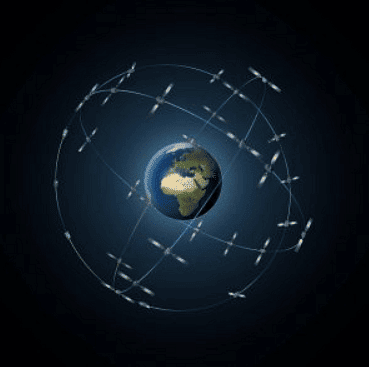
- MEO orbits are situated between LEO and GEO, with altitudes typically ranging from 2,000 to 35,786 kilometers (about 1,240 to 22,236 miles).
- Satellites in MEO do not follow a fixed path and can serve various purposes.
- Navigation satellites like the European Galileo system use MEO to provide global positioning and timing services.
- MEO is advantageous for navigation because it allows satellites to cover large portions of the Earth's surface simultaneously.
4. Polar Orbit and Sun-Synchronous Orbit (SSO)
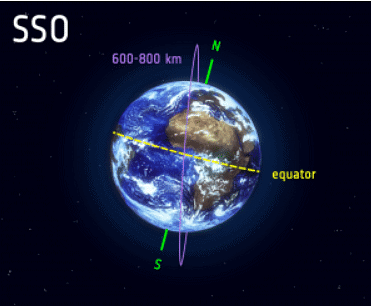
- Satellites in polar orbits pass over Earth's poles from north to south (or vice versa) during each orbit.
- These orbits are typically at altitudes between 200 and 1,000 kilometers (about 124 to 621 miles) and are considered a type of low Earth orbit.
- Sun-synchronous orbits (SSO) are a specific type of polar orbit where satellites are synchronized with the Sun, passing over the same spot on Earth at the same local time consistently.
- SSO satellites observe Earth's surface as if it were always the same time of day, which is valuable for monitoring changes over time.
- Scientists and environmentalists use SSO satellites to study weather patterns, predict weather events, monitor emergencies like forest fires or flooding, and gather long-term data on issues such as deforestation and rising sea levels.
- To maintain constant illumination, SSO satellites often synchronize with the sunrise or sunset and orbit at altitudes of around 600 to 800 kilometers (about 373 to 497 miles).
5. Transfer Orbits and Geostationary Transfer Orbit (GTO)
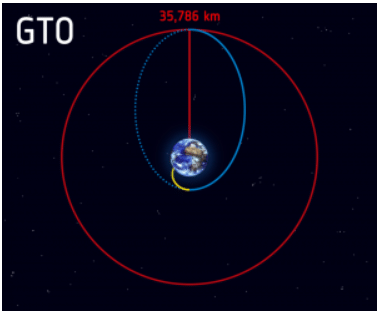
- Transfer orbits are used to transition satellites from their initial launch trajectory to their final orbit.
- Satellites launched into GTO, specifically, are not placed directly into the final geostationary orbit.
- Instead, they start on a transfer orbit that allows them to reach the desired orbit with the help of onboard propulsion.
- Transitioning to GEO from GTO involves altering the satellite's eccentricity (orbit shape) to circularize the orbit at the geostationary altitude.
6. Lagrange Points (L-Points)
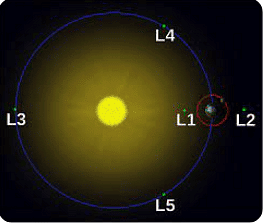
- Lagrange points are unique positions in space where the gravitational forces of two large bodies, such as the Earth and the Moon or the Earth and the Sun, create a stable region for objects to remain relatively stationary.
- These points, denoted L1 to L5, are used for various purposes, including space telescopes and monitoring Earth's environment.
- For example, the James Webb Space Telescope (JWST) is positioned at L2, where it can observe the universe with minimal interference from Earth's atmosphere and heat.
- L-Points are advantageous for missions that require a stable and unobstructed view of space or specific regions on Earth.
The document What Is An Orbit? | General Awareness - Bank Exams is a part of the Bank Exams Course General Awareness.
All you need of Bank Exams at this link: Bank Exams
|
399 videos|751 docs|149 tests
|
Related Searches




















